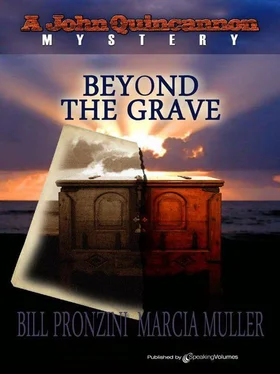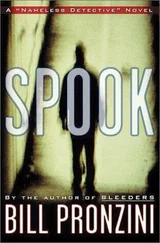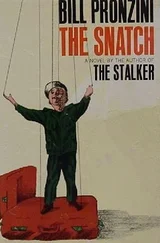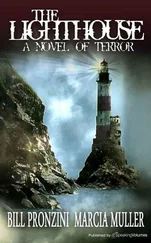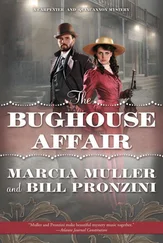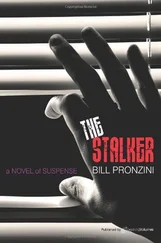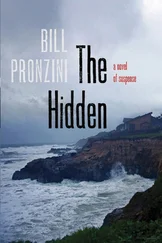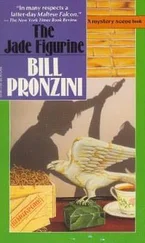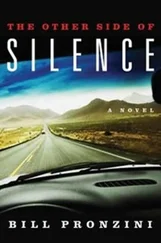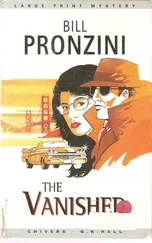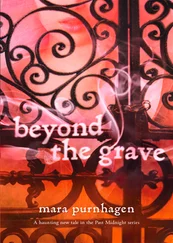Bill Pronzini - Beyond the Grave
Здесь есть возможность читать онлайн «Bill Pronzini - Beyond the Grave» весь текст электронной книги совершенно бесплатно (целиком полную версию без сокращений). В некоторых случаях можно слушать аудио, скачать через торрент в формате fb2 и присутствует краткое содержание. Год выпуска: 2011, ISBN: 2011, Издательство: Speaking volumes, Жанр: Исторический детектив, на английском языке. Описание произведения, (предисловие) а так же отзывы посетителей доступны на портале библиотеки ЛибКат.
- Название:Beyond the Grave
- Автор:
- Издательство:Speaking volumes
- Жанр:
- Год:2011
- ISBN:9781612321202
- Рейтинг книги:4 / 5. Голосов: 1
-
Избранное:Добавить в избранное
- Отзывы:
-
Ваша оценка:
- 80
- 1
- 2
- 3
- 4
- 5
Beyond the Grave: краткое содержание, описание и аннотация
Предлагаем к чтению аннотацию, описание, краткое содержание или предисловие (зависит от того, что написал сам автор книги «Beyond the Grave»). Если вы не нашли необходимую информацию о книге — напишите в комментариях, мы постараемся отыскать её.
Beyond the Grave — читать онлайн бесплатно полную книгу (весь текст) целиком
Ниже представлен текст книги, разбитый по страницам. Система сохранения места последней прочитанной страницы, позволяет с удобством читать онлайн бесплатно книгу «Beyond the Grave», без необходимости каждый раз заново искать на чём Вы остановились. Поставьте закладку, и сможете в любой момент перейти на страницу, на которой закончили чтение.
Интервал:
Закладка:
I'd faced much more disagreeable situations than that in the past year, however. And I knew that the only reasonable way to deal with them was with cool thinking and logic. I now made myself examine the problem more rationally than I had earlier on the drive home from Las Lomas.
The cigarette could have been smoked and dropped there by any number of persons-both known and unknown to me. The obvious assumption was that it was a stranger, someone who frequented the place and had been surprised to find me there. A hiker who lived in the area, perhaps; or one of the teenagers who used the place to party and had spray-painted the rainbow on the church's wall. A teenager would naturally have wanted to keep out of sight-why risk an encounter with an unfamiliar adult? A lone hiker probably preferred his solitude and wouldn't have seen the need for conversation with me-after all, it was more or less a public place, and I had as much right to be there as anyone else. But wouldn't a hiker or a teenager have merely gone away? Why wait and watch from behind that wall for the length of time I'd sensed someone's eyes on me? And why disappear when I approached?
The person's secretive behavior was what made me think it must have been someone known to me, who hadn't wanted to encounter me at the ruins. But who? The only thing I knew for sure was that he or she was a smoker. In today's health-conscious society, that fact should have narrowed the possibilities greatly, but from what I recalled, no one in Las Lomas was concerned with that aspect of his health.
Sam Ryder smoked constantly. I could picture him, gray plumes curling from his nostrils as he talked. He'd even had a cigarette going in an ashtray on the chopping block when he'd prepared the salad for the dinner party. After dinner, when he'd passed cigarettes around, Arturo had taken one. And Dora-a surprise in one so conscious of the other substances she took into her body. Gray had turned down the offer, but his abstinence apparently was an off-and-on thing; Dora had chided him for repeatedly quitting and starting up again, and I suspected he may have refused just so he could act self-righteous and annoy her.
And that was the sum total of my acquaintances in the village. Well, not really, if you counted Jim Marshall, the gossipy old man who ran the general store. Did he smoke? Probably; his teeth were tobacco-stained. And he was the type to hide and observe someone in hopes of adding to his store of rumor.
Of those people, who had known I planned to revisit the site of the old pueblo? Sam, of course. And Dora; I'd told her. Gray would naturally have access to anything Dora knew. Jim Marshall? Any of the three could have mentioned me to him in passing. What about Arturo? He had been off somewhere on his motor scooter.
Like Jim Marshall, Arturo was a perfect candidate for the role of watcher, although not for the same reasons; the artist would have hesitated to approach me out of shyness, perhaps hidden behind the wall debating whether or not to reveal himself. And when I'd run in his direction, his natural inclination would have been to flee.
“Maldito!” I said aloud. So much for logical thinking. All the process had done for me was point up that it could have been anyone behind that wall.
How to narrow it down? I wondered. There was, of course, tangible evidence-the cigarette butt. I got up and went to get my purse, extracted the butt from the change compartment of my wallet, where I'd put it for safekeeping. It was an ordinary white filter tip, the tobacco and paper burned down so that the manufacturer's stamp had been destroyed. A police laboratory could easily analyze what brand it was, but that didn't help me; I didn't have access to such a facility. Had I still been seeing Dave, I might have been able to cajole him into having it analyzed for me. But right now Dave was probably packing his expensive camera gear and video recording equipment and skiis in preparation for his new life, which-he thought-would work out so much better without me….
Camera gear and video equipment and skiis. Maybe Mama did have a point after all.
I turned my mind away from Dave and back to the question of the cigarette butt. Surprisingly, doing that didn't take nearly the effort it would have the day before.
In lieu of having a lab identify the cigarette brand, was there anything I could do? I supposed I could drive up to Las Lomas and examine everyone's cigarettes, to see if they smoked cork- or filter-tipped. But that wasn't really a very definitive test, and what about Gray, who probably bummed his smokes?
I had to face it: My clue wasn't much of a clue at all. And what did it really matter, anyway, that someone had been watching me at those ruins? Any menace was probably all in my mind.
Weary of playing detective, I glanced at my watch. Quarter to ten; much too late to call Mama. I'd stayed away from the hospital this evening, hadn't even attempted to phone her. Why? Because I was still angry with her? No, because I was more than a little ashamed of my behavior this past morning. I'd make it up to her tomorrow; we'd talk and all would be forgiven. Dios gracias , I thought as I reached for one of the books on church architecture, that I do not come from a family of grudge-holders!
The volume I selected was one that incorporated modern photographs of those Spanish churches that had survived to the present day-mainly mission churches-with reproductions of old drawings of those that had fallen to ruins. I paused at pictures of one of my favorite missions, San Juan Capistrano, its stately bell tower reflected in the fountain of its inner courtyard; then I turned the pages until I came to another favorite, the ornate altar of Mission Santa Barbara. The architecture of the California missions is basically simple: soft arches, clean roof lines, graceful form embodied in plain wood, adobe, and tile. It is only in the most holy sanctuary that austerity gives way to splendor, to wooden and gilt and stone embellishments whose only purpose is the glorification of God.
Near the end of the book I found what I was seeking-pen-and-ink drawings of San Anselmo de las Lomas. The church was much as I'd reconstructed it in my mind: even more austere than that of the missions, with a plain iron cross topping its peaked roof and a square tower containing one great bell. The sketches of the interior showed a long, windowless nave; its huge main beam-the same one that now lay charred and rotting on the ground-ran the length of the structure and was intersected by dozens of smaller cross beams. The altar was very plain: rough-hewn dark wood, with two tall candeleros upon it and a carved crucifix above. Unlike many of the churches, there were no niches bearing statues in the wall on either side of the altar; the apses I'd observed in the side walls of the ruins would have served that function. The artist had indicated the apses with areas of shadowing, but the angle from which the drawing had been made had prevented him from showing what was in them.
I looked up from the drawing and closed my eyes, picturing the little church where the Aunts and their families had worshipped in the East L.A. barrio. It had been a poor church, more like the simple ones of los ranchos grandes than St. Joseph's, which Carlota and I had attended in Santa Barbara, and it, too, had had apses on either side of the altar. To the right as one faced the congregation had been the Virgin Mary, where she customarily is. To the left … I couldn't remember. Not that it mattered; it just pointed up how much my concern for things Catholic had dwindled since I'd stopped going to church. Not that I didn't still consider myself a Catholic; I had been baptized one, and I supposed one day I would receive the Church's last rites. I had no quarrel with the Church, had not ceased attending Mass for any particular reason. I had merely stopped going, caught up in the pleasures and concerns of my day-to-day life….
Читать дальшеИнтервал:
Закладка:
Похожие книги на «Beyond the Grave»
Представляем Вашему вниманию похожие книги на «Beyond the Grave» списком для выбора. Мы отобрали схожую по названию и смыслу литературу в надежде предоставить читателям больше вариантов отыскать новые, интересные, ещё непрочитанные произведения.
Обсуждение, отзывы о книге «Beyond the Grave» и просто собственные мнения читателей. Оставьте ваши комментарии, напишите, что Вы думаете о произведении, его смысле или главных героях. Укажите что конкретно понравилось, а что нет, и почему Вы так считаете.
